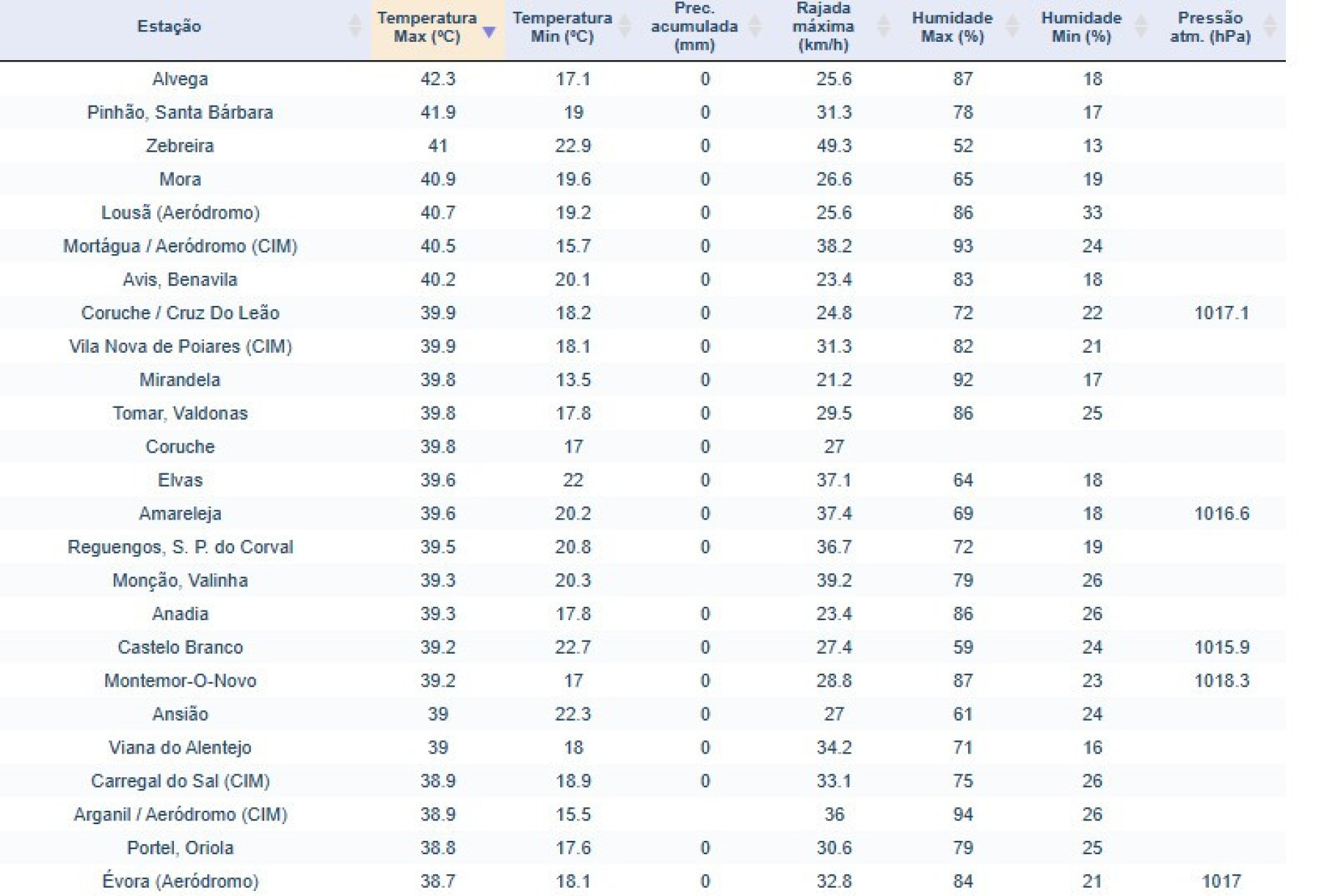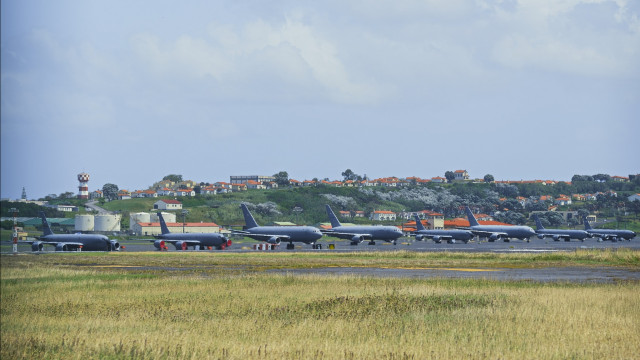The previous week experienced high temperatures in mainland Portugal, with a heat warning in place. During the period between June 15 and June 21, the highest temperature was recorded on Tuesday, June 17, according to data from the Portuguese Institute for Sea and Atmosphere (IPMA), analyzed by Notícias ao Minuto.
On that day, the Alvega station in the municipality of Abrantes reported a temperature of 42.3 degrees Celsius.
Similarly, six other stations reported maximum temperatures exceeding 40 degrees Celsius: Pinhão, Santa Bárbara (41.9 degrees), Zebreira (41), Mora (40.9), Lousã (Aerodrome) (40.7), Mortágua/Aerodrome (CIM) (40.5), and Avis, Benavila (40.2).
It is notable that while several locations recorded temperatures above 40 degrees on other days, none reached 42 degrees.

In recent days, several districts were under yellow and orange alerts due to the hot weather, prompting the Directorate-General of Health (DGS) to issue various recommendations.
Temperatures have been gradually decreasing in recent days. Despite the onset of summer, the IPMA forecasts showers and thunderstorms in mainland Portugal for the last week of June, expected to last until Thursday, after which temperatures are anticipated to rise again.
According to IPMA, between June 23 and June 25, “showers are expected on the mainland, more likely in the North and Central regions”. These showers, it should be noted, “may be accompanied by thunderstorms”.
During these days, “maximum temperatures will generally range between 23 and 34 degrees, being higher in the interior and southern regions”. Minimum temperatures are expected to vary “between 13 and 18 degrees”.
From Thursday onwards, “no precipitation is expected, and there will be a rise in temperature values, which could again exceed 40 degrees in Alentejo and the interior North and Central regions in the following days”.

The last week of June will start with mild weather and showers, especially in the North and Central parts of the country. From Thursday, the weather is expected to change. Here’s what to expect.
Notícias ao Minuto with Lusa | 20:13 – 21/06/2025
The summer season began on Saturday. The longest day of the year in the Northern Hemisphere occurred at 2:42 AM, marking what is traditionally the longest day there. On December 21, it will come to the Southern Hemisphere at 3:03 PM.
On the first day of summer, the sun rises at 6:10 AM and sets at 9:06 PM, with the day lasting 14:55:47. On this Sunday, the day appears to be of the same length but will be two seconds shorter, and by the end of the month, the day will be five minutes shorter.
This pattern will persist until the autumn equinox on September 22 at 7:19 PM, when days and nights will be of equal length. From then on, nights will begin to dominate until the winter solstice, arriving at 3:02 PM on December 21, marking the longest night.




